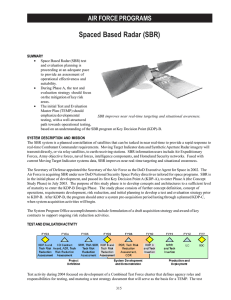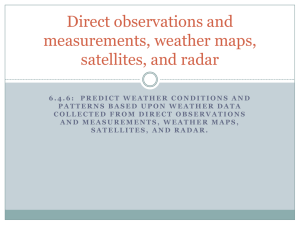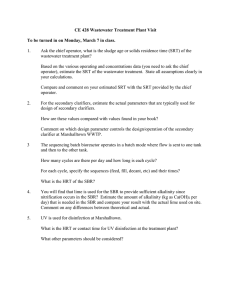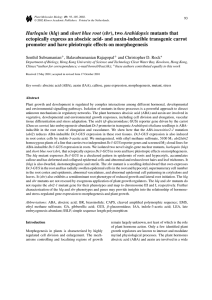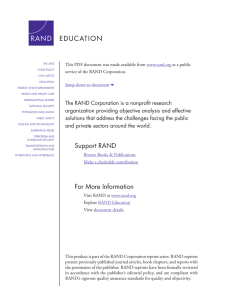T Space-Based Radar (SBR) AIR FORCE PROGRAMS
advertisement
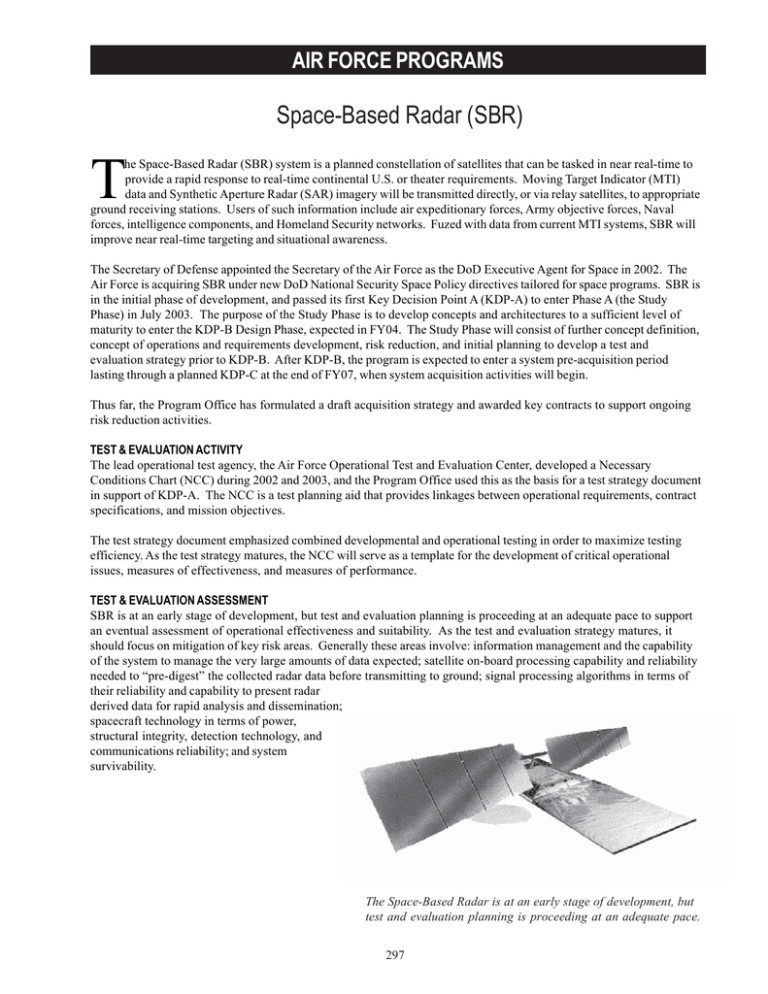
AIR FORCE PROGRAMS Space-Based Radar (SBR) T he Space-Based Radar (SBR) system is a planned constellation of satellites that can be tasked in near real-time to provide a rapid response to real-time continental U.S. or theater requirements. Moving Target Indicator (MTI) data and Synthetic Aperture Radar (SAR) imagery will be transmitted directly, or via relay satellites, to appropriate ground receiving stations. Users of such information include air expeditionary forces, Army objective forces, Naval forces, intelligence components, and Homeland Security networks. Fuzed with data from current MTI systems, SBR will improve near real-time targeting and situational awareness. The Secretary of Defense appointed the Secretary of the Air Force as the DoD Executive Agent for Space in 2002. The Air Force is acquiring SBR under new DoD National Security Space Policy directives tailored for space programs. SBR is in the initial phase of development, and passed its first Key Decision Point A (KDP-A) to enter Phase A (the Study Phase) in July 2003. The purpose of the Study Phase is to develop concepts and architectures to a sufficient level of maturity to enter the KDP-B Design Phase, expected in FY04. The Study Phase will consist of further concept definition, concept of operations and requirements development, risk reduction, and initial planning to develop a test and evaluation strategy prior to KDP-B. After KDP-B, the program is expected to enter a system pre-acquisition period lasting through a planned KDP-C at the end of FY07, when system acquisition activities will begin. Thus far, the Program Office has formulated a draft acquisition strategy and awarded key contracts to support ongoing risk reduction activities. TEST & EVALUATION ACTIVITY The lead operational test agency, the Air Force Operational Test and Evaluation Center, developed a Necessary Conditions Chart (NCC) during 2002 and 2003, and the Program Office used this as the basis for a test strategy document in support of KDP-A. The NCC is a test planning aid that provides linkages between operational requirements, contract specifications, and mission objectives. The test strategy document emphasized combined developmental and operational testing in order to maximize testing efficiency. As the test strategy matures, the NCC will serve as a template for the development of critical operational issues, measures of effectiveness, and measures of performance. TEST & EVALUATION ASSESSMENT SBR is at an early stage of development, but test and evaluation planning is proceeding at an adequate pace to support an eventual assessment of operational effectiveness and suitability. As the test and evaluation strategy matures, it should focus on mitigation of key risk areas. Generally these areas involve: information management and the capability of the system to manage the very large amounts of data expected; satellite on-board processing capability and reliability needed to “pre-digest” the collected radar data before transmitting to ground; signal processing algorithms in terms of their reliability and capability to present radar derived data for rapid analysis and dissemination; spacecraft technology in terms of power, structural integrity, detection technology, and communications reliability; and system survivability. The Space-Based Radar is at an early stage of development, but test and evaluation planning is proceeding at an adequate pace. 297 AIR FORCE PROGRAMS 298


